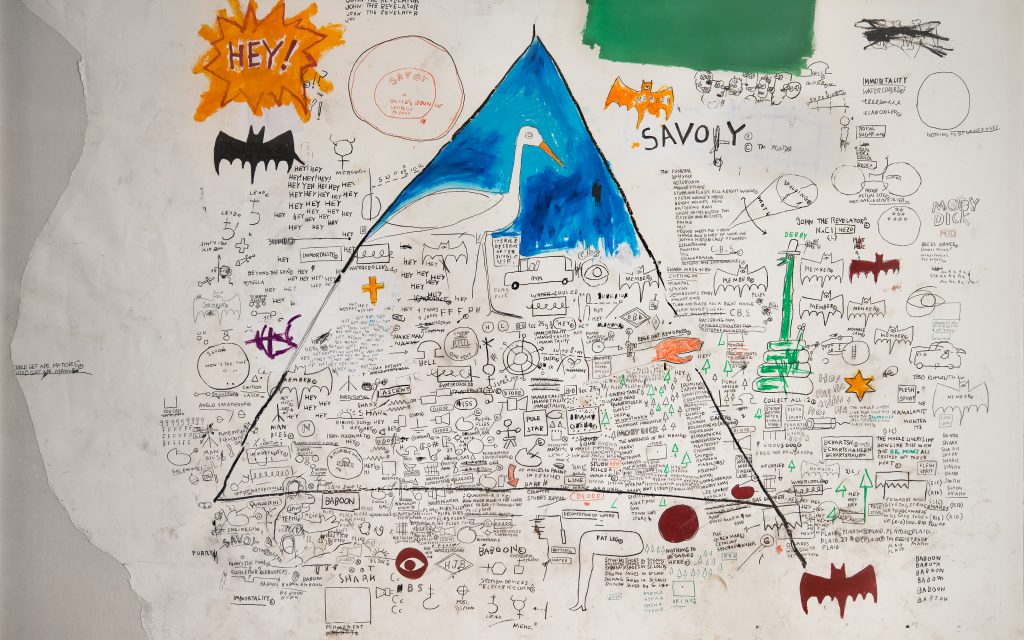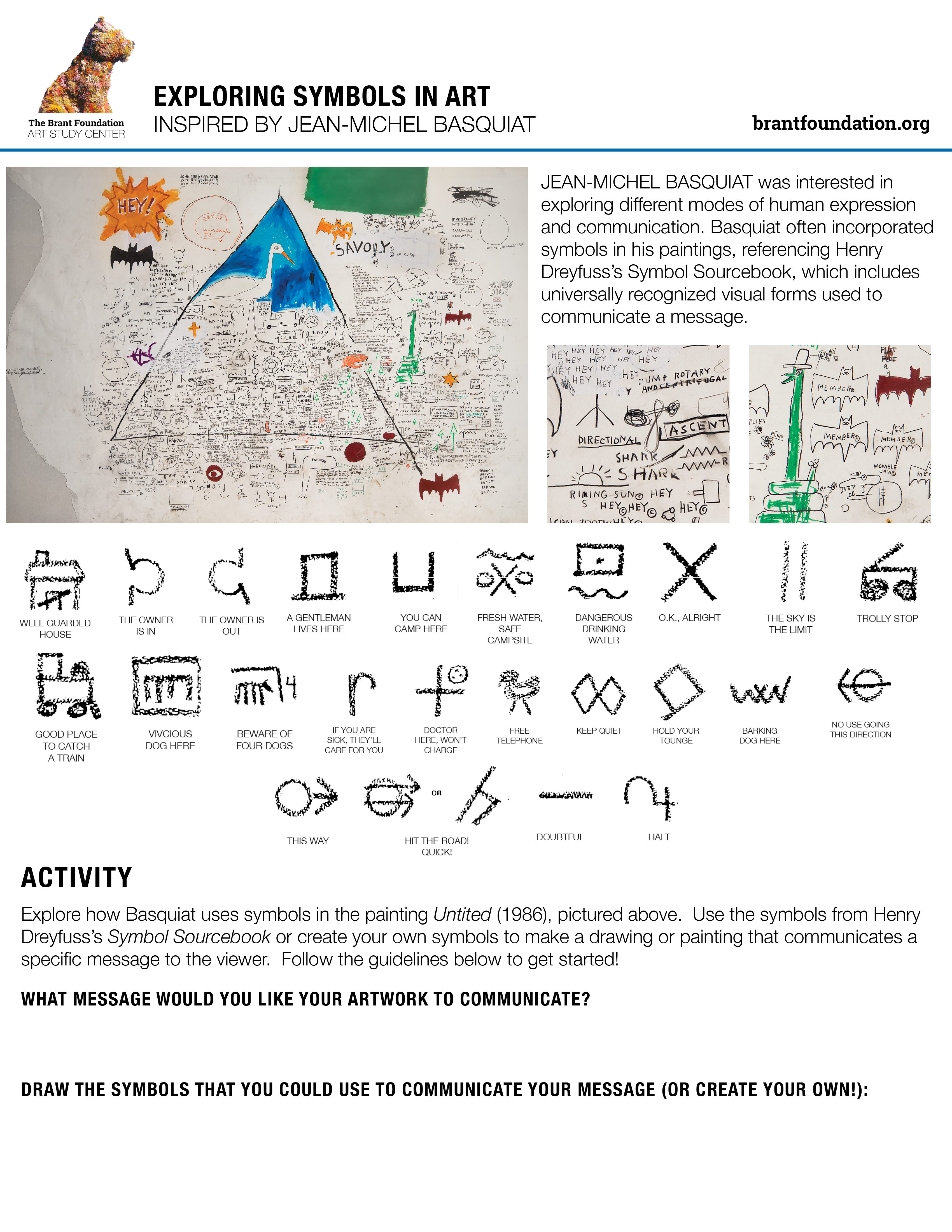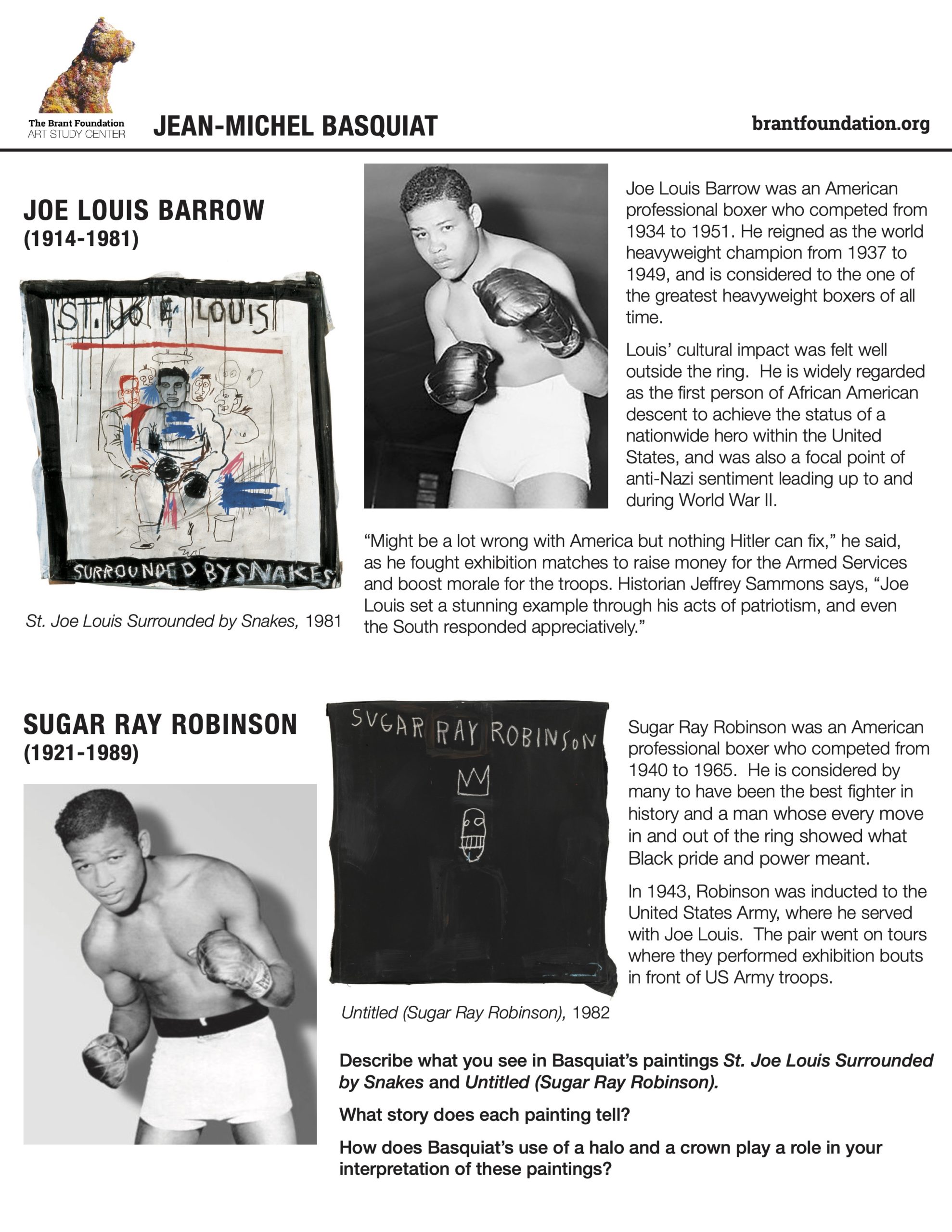Learn / Create
Jean-Michel Basquiat
Interactive Virtual Tour
Exploring Symbols in Art
Heroes in Art
New York
July 15th, 2020
Exploring Symbols in Art
Heroes in Art
At the onset of the 1980s, Jean-Michel Basquiat (1960- 1988) took the art world by storm with his powerful and highly complex works, achieving a comprehensive oeuvre of over 1,000 paintings and more than 2,000 drawings in less than a decade. Radical in both his artistic practice and life, Basquiat made the streets of Lower Manhattan his studio, joining the creative outpour that was emerging in the late 1970s and 80s in New York City. Basquiat’s place in the East Village art scene remains absolute and for the first time in decades, this exhibition brings his work back to the same neighborhood that inspired it.
Click on the circles that appear on your screen to move through the space and explore The Brant Foundation’s 2019 Jean-Michel Basquiat exhibition at its New York space!
© Estate of Jean-Michel Basquiat. Licensed by Artestar, New York.
360 VR tour captured and produced by Tom Powel Imaging
RELATED LINKS:
Third Dimension: Works from The Brant Foundation (The Brant Foundation, New York)


